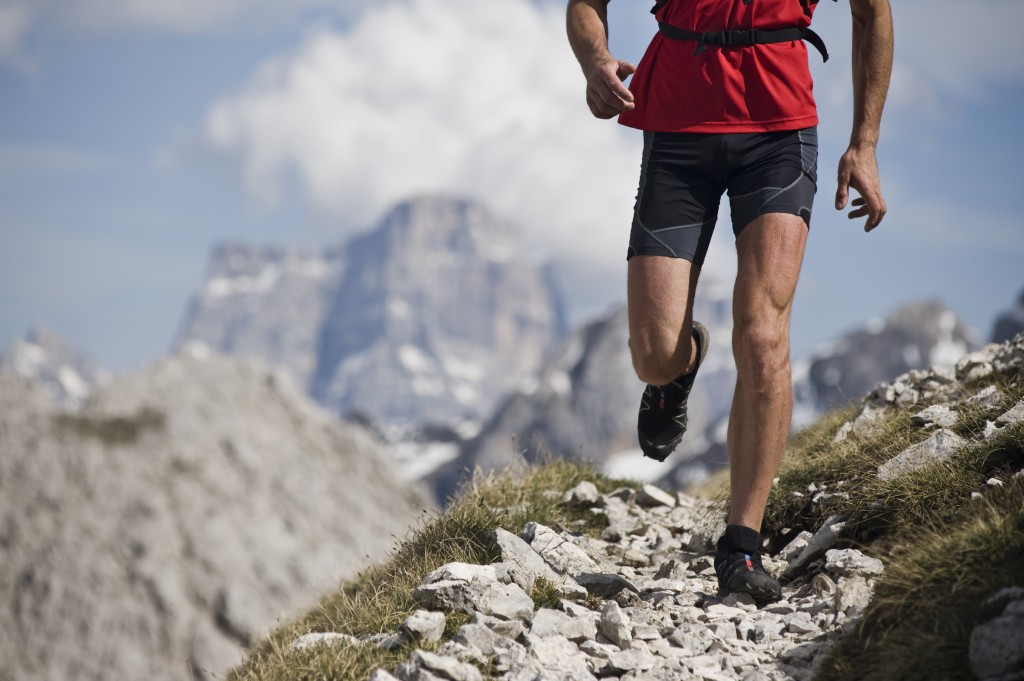Trail running differs from 'regular running' by heading away from the flat city streets and running circuits, and getting back into nature. Narrow winding single trails that snake through wilderness areas, punctuated with wide scenic vistas and refreshing water holes.
Trail running opens up a whole new way to explore some of the more remote wilderness areas. Trail running has to ability to shrink some multi-day hiking trails, turning them into half or full day adventures. It also servers as a good stepping stone for getting into competitive rogaining and adventure racing.
It is also fantastic cross training for other activities which require a high level of muscular and aerobic endurance, such as mountaineering or cross country skiing. By heading up into the mountains, 300-700 m elevation gain runs can become the norm, improving strength and cardio-vascular fitness.
But how do I get into it? To put it simply, go out and start running. Having said that, it is important to start in a sustainable way. If you have never run before, it can be very easy to burn out or hurt yourself. In this post I will do my best to explain my experience of getting into running, how I recovered from and prevented injury and ramped up my training in a sustainable way so I didn't burn out.
Couch to 5km
GO AND BUY A NEW PAIR OF SHOES!
Seriously, new shoes are great! Not only will they replace the manky pair of joggers you have been using for the last 3 years, but they will act as a shiny beacon of motivation, beaconing for you to use them!
Shoes are important. Do some research and work out what sort of shoes are going to be good for you. Try to work out if you run flat footed or are a heel striker. Also work out if you are over pronator (foot rolls inwards when you put weight on it). Having this knowledge will help you get a pair of shoes that will give you good support and help to prevent knee and ankle injuries.
I started out with a pair of Salomon trail running shoes I picked up form Mountain Designs for $95 on sale. If you are planning to hit the mountain trails, you may want to pick up a pair of similar shoes. They offer stability and grip (for soft or rocky terrain) than regular streets runners. They are also a little more durable and make super cool approach shoes for climbing weekends!
Next, work out a baseline fitness level for yourself. There is a whole bunch of resources online for "couch to 5km" programs, but I will try to distill the salient points here.
Basically, you need to start slow. The classic C25K programs suggest starting by alternating running and walking when you start out, and slowly building into running for a solid 20 mins. For a lot of people in this club, who are going to have a good level of fitness to begin with, you can probably push yourself a little bit harder at the start. Remember though, the key to all this is taking is slow. This will help prevent injury and help keep you motivated.
My suggestion is to first, go for a run. You don't need to do it at speed, just stick to a nice steady pace you can maintain. Aim to run for a full 10-15 minutes (maybe 2-3km) and stop when you can't run anymore. Measure how far you went (google maps can be helpful here) and this will be your starting run length.
From here, you want to increase your running distance by no more than 10% each week. Aim to go on no more than 3 training runs a week and space them out evenly. You need to make sure you are giving your body time to recover. Once you have built a good baseline fitness, you can then start building to longer runs and higher frequencies.
Learn from my mistake. I started out way to keen, doing 4km runs, four times a week. I stuck to the 10% rule, but by week 4 my knee was stuffed. I'll talk more about this later in the post, but take it from me, don't over-do it too early.
Warm-Up
Warming up (and warming down) is super important! Like, more important than the running. You want to start with warm muscles then move onto at least a good 5 - 10 minutes of stretches. It is best to try and stretch all your major leg (Calf, Hamstring, Quads, Gluteus) and back muscles.
Once you finish your run, you want to repeat your stretching routine and then some - maybe 15 mins of stretching. You should also put some extra focus into anything that felt tight or sore during your run.
Proper warm ups and warm downs will help you prevent some of the more common running injuries - which leads us to our next section.
Running Injuries
I recommend spending a little time reading into common running injuries. It will help you to identify things that might be starting to go wrong with your own body.
If you feel like something is not quite right, I recommend winding way back. You may not need to stop completely, but definitely wind back. Focus on stretching and icing anything that hurts. Also, do some reading to help you work out what you may have done. As always though, if you don't know what to do - GO AND SEE A DOCTOR!
As I said earlier, I ran into some problems with my knee about 4 weeks after I started running. It started with some niggling pain in the outside of my right knee. It eventually got to the point where it was painful to get out bed in the morning and hurt even when walking around. It had to stop running completely for a week. I did some research and worked out that my problem was my IT band, the tendon that runs down the outside of the leg. Once the pain had gone down after a week, I slowly started running again and iced my knee after every run. I also started focusing on stretches that targeted the IT band. 3 weeks later and I feel 100%.
Building Distance
I've been into this for about 8 weeks now and this is point I am at. So I really can't give you any information beyond this point. Just keep in mind all the stuff from above and listen to your body. If something hurts, take care of it. If you are feeling tired all the time, maybe there is something missing from you diet.
This is where trail running will start to get really interesting. You now have the fitness to get way out of the city and start hitting the mountains. This is what you have been building toward!
Start setting goal for yourself. Pick some trails you'd like to run or races you'd like to enter and go for it! In the sort term, I'm going to do my first 10km (maybe this weekend). In the medium term, I'm look at some 15km stuff, like maybe the trail from Govetts Leap to Junction Rock and back up Perry's Lookdown (15km) and a half marathon in some form. In the long term, I am trying to build up to the Coastal Track (30km) and the Oaks Fire Trail (27km). Eventually I'd like to build to a regular marathon and maybe even the 6-foot track marathon. Beyond that, who knows - Northface 100 anyone?




